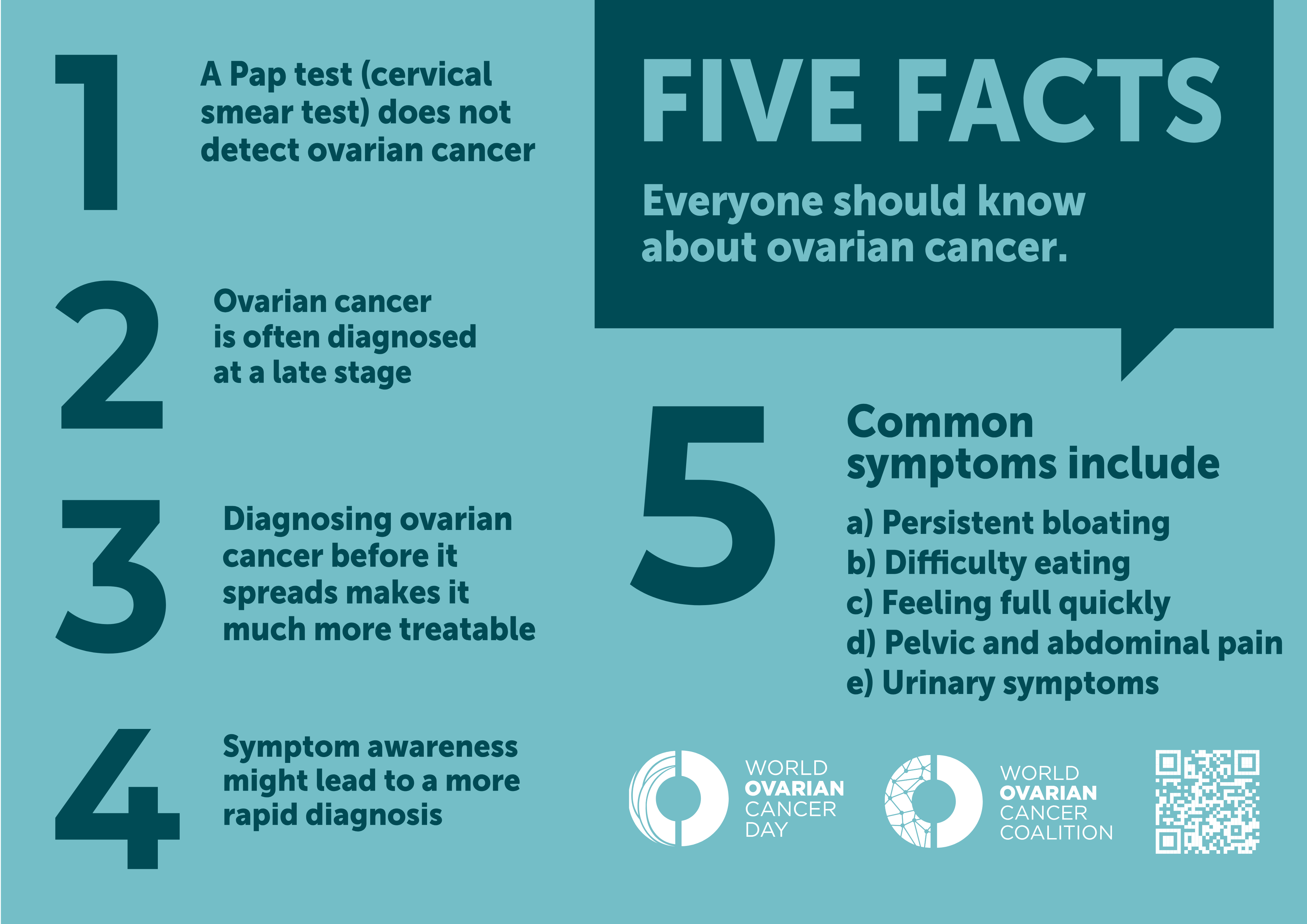May 8th marks World Ovarian Cancer Day. The day was established in 2013 by leaders from various ovarian cancer advocacy organizations around the world to join forces to fight against and raise awareness for the aggressive disease.
Ovarian cancer is a growth of cells that form in the ovaries and is one of the hardest cancers to diagnose, next to pancreatic and renal cancers, due to its vague symptoms that often progress before a diagnosis is given. It is also among the deadliest cancers for women, along with lung and breast cancer. According to the American Cancer Society’s 2025 estimates, about 20,890 women in the United States will receive a new diagnosis of ovarian cancer, and about 12,730 women will die from the disease this year alone.
There are two main reasons that ovarian cancer remains one of the hardest cancers to diagnose: the lack of effective and reliable screenings and vague or no early symptoms. Unlike other cancers, like breast or colorectal cancer, there is no routine screening, checkup, or well-known symptoms that can pinpoint ovarian cancer. The cancer cannot be detected in a pelvic exam or pap smear. Symptoms of the cancer often overlap with very minor health issues and the tests used to get an official diagnosis are very expensive and not performed unless the provider thinks additional screening needs to be done.
Most women who are diagnosed with ovarian cancer must go through a series of screenings before a diagnosis can be given. This is not new to cancer, however, ovarian cancer does not present with onset or unusual symptoms like other cancers, so the screening is often delayed or misguided. With symptoms that are more annoying than concerning, the chances that a patient will seek the appropriate medical attention before the cancer progresses is significantly less than for other cancers.
To begin screening, a patient will need to get their doctor to perform these tests, which can be a challenge considering what to test for as the symptoms are vague. Once a doctor begins to screen, they will start with a physical exam and blood work before proceeding to any test that would officially diagnose the patient. Only after any abnormalities are reported in the initial tests does a doctor proceed to CT or PET scans and even surgery, which is where the cancer is found and shortly diagnosed.
After a diagnosis, a patient will be recommended a treatment plan which can include a combination of radiation and chemotherapy, or surgery, depending on the stage and type of ovarian cancer the patient has. Ovarian cancer survival is heavily dependent on the stage and whether it has metastasized. Women diagnosed with ovarian cancer have a ~52% chance of survival at the 5-year mark, solidifying how crucial the time between symptoms and diagnosis is.
While there is not a lot of information or new methods to diagnose ovarian cancer quicker, research has evolved. With advancements in genetic testing, chemotherapy, and surgery, women diagnosed have more options than they did before. The American Cancer Society has reported a 43% decrease in ovarian cancer deaths since 1976, with most progress since the mid-2000s.
On this World Ovarian Cancer Day, it is important for women to learn the symptoms of ovarian cancer, know what increases the risk, and advocate for themselves at doctor’s appointments. To learn more about the disease, check out the sources below:
- American Cancer Society, About Ovarian Cancer
- Mayo Clinic, Ovarian cancer
- Cleveland Clinic, Ovarian Cancer: Symptoms, Diagnosis & Treatment
- Ovarian Cancer Research Alliance
- World Ovarian Cancer Coalition
